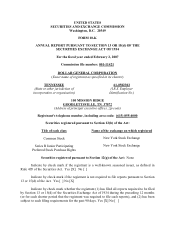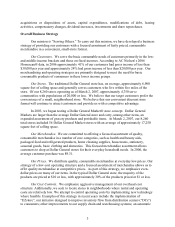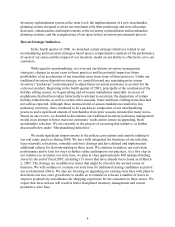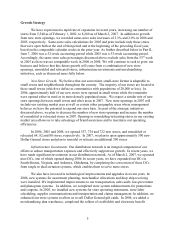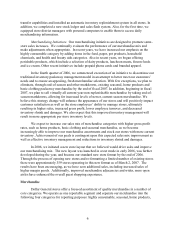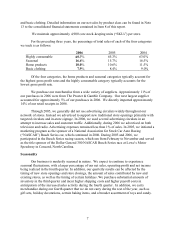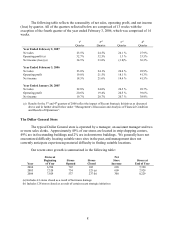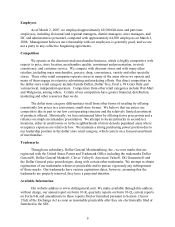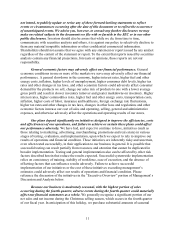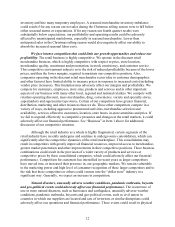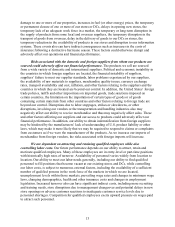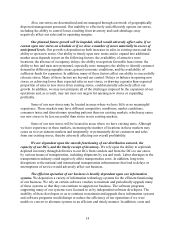Dollar General 2006 Annual Report Download - page 6
Download and view the complete annual report
Please find page 6 of the 2006 Dollar General annual report below. You can navigate through the pages in the report by either clicking on the pages listed below, or by using the keyword search tool below to find specific information within the annual report.inventory replenishment system at the store level; the implementation of a new merchandise
planning system designed to assist our merchants with their purchasing and store allocation
decisions; enhancements and improvements to the inventory replenishment and merchandise
planning systems; and the reengineering of our open-to-buy inventory procurement process.
Recent Strategic Initiatives
In the fourth quarter of 2006, we launched certain strategic initiatives related to our
merchandising and real estate strategies based upon a comprehensive analysis of the performance
of each of our stores and the impact of our inventory model on our ability to effectively serve our
customers.
With regard to merchandising, we reviewed our historic inventory management
strategies, changes in recent years to those practices and the potential impact on future
profitability of an acceleration of our transition away from some of those practices. Under our
traditional inventory disposition strategy, we carried forward any remaining prior season
inventory (“packaway”) and attempted to adjust future inventory purchases to account for the
carryover product. Beginning in the fourth quarter of 2003, principally at the conclusion of the
holiday selling season, we began taking end-of-season markdowns materially in excess of
markdowns that had been taken historically to attempt to accelerate the disposition of certain
holiday-related items, as well as certain other seasonal, home and basic clothing items that had
not sold as expected. Although these increased end-of-season markdowns resulted in less
packaway inventory, there continued to be a packaway component of our merchandising
practices and a significant amount of merchandise from prior seasons remained in many stores.
Based on our review, we decided to discontinue our traditional inventory packaway management
model in an attempt to better meet our customers’ needs and to ensure an appealing, fresh
merchandise selection. We are currently in the process of executing that initiative, as further
discussed below under “Merchandising Initiatives”.
We made significant improvements to the policies, procedures and controls relating to
our real estate practices during 2006. We have fully integrated the functions of site selection,
lease renewals, relocations, remodels and store closings and have defined and implemented
additional criteria for decision-making in those areas. We continue to analyze our real estate
performance and to look for ways to further refine and improve our practices. As a first step in
our initiative to revitalize our store base, we plan to close approximately 400 underperforming
stores by the end of fiscal 2007, including 151 stores that have already been closed as of March
2, 2007. The closings are in addition to stores that might be closed in the normal course of
business. We will continue to evaluate our store base for additional closing candidates as part of
our revitalization efforts. We also are focusing on upgrading our existing store base with plans to
decelerate our new store growth rate to enable us to remodel or relocate a number of stores to
improve productivity and enhance the shopping experience for the customers in those stores. We
expect that these actions will result in better disciplined inventory management and a more
productive store base.
4

